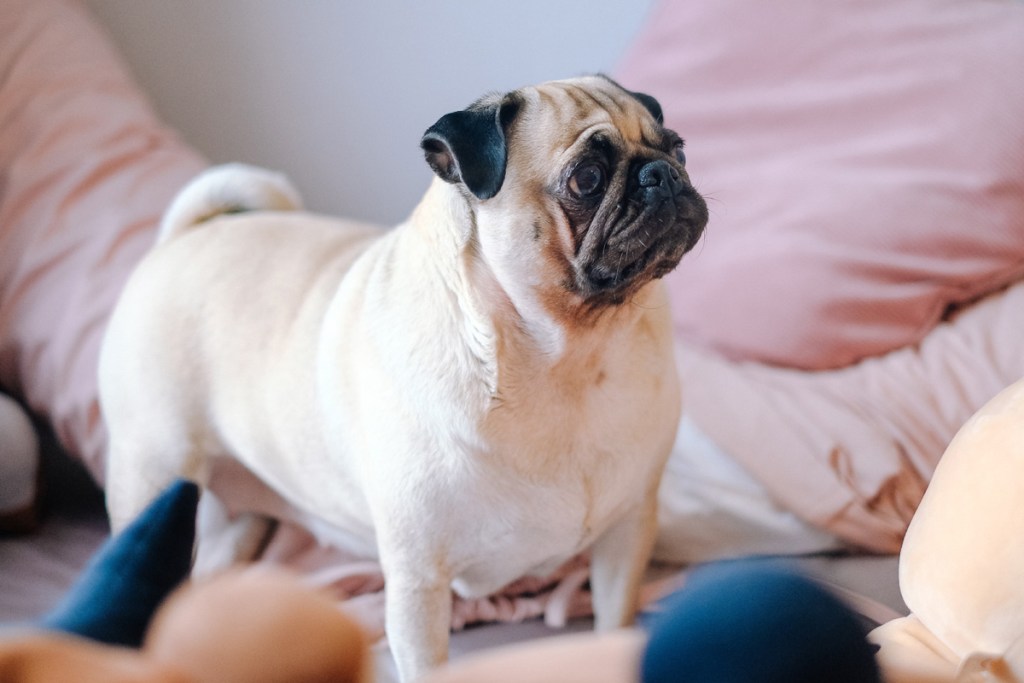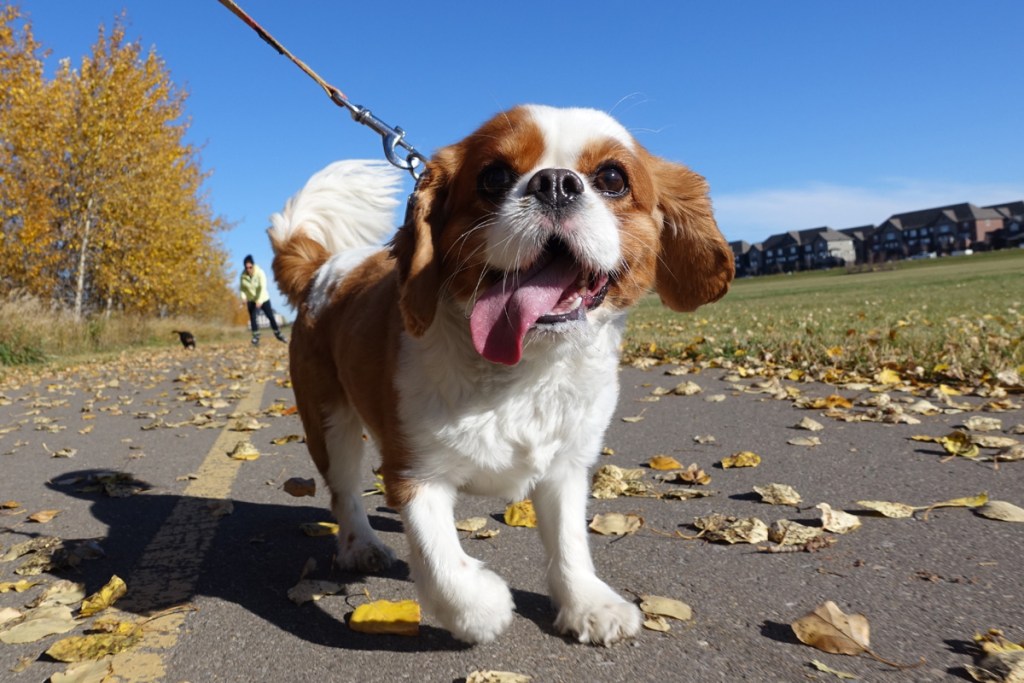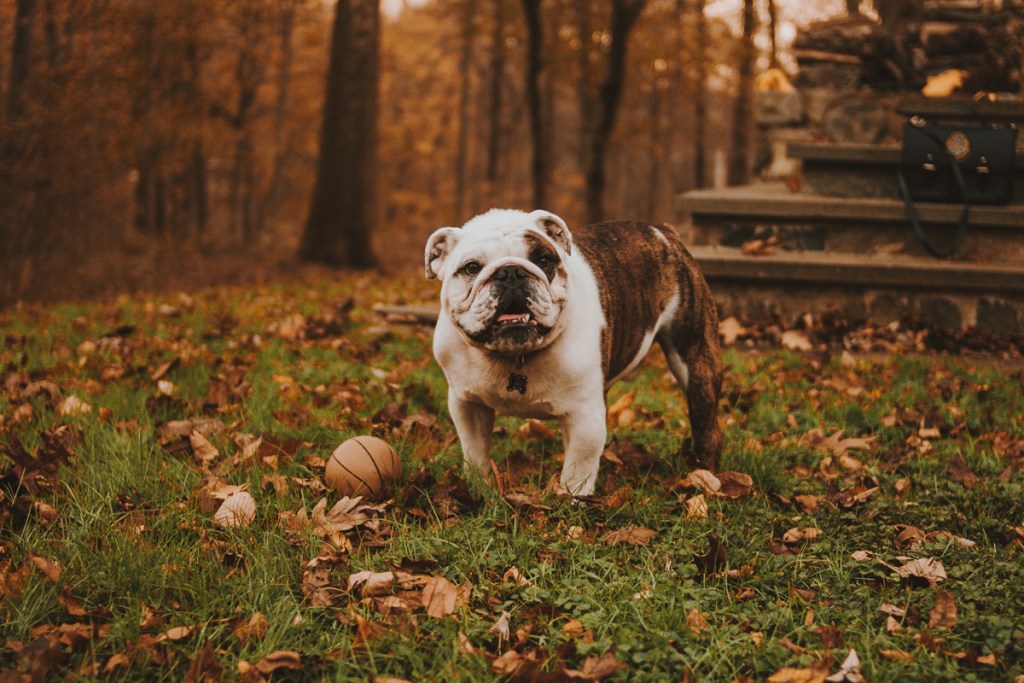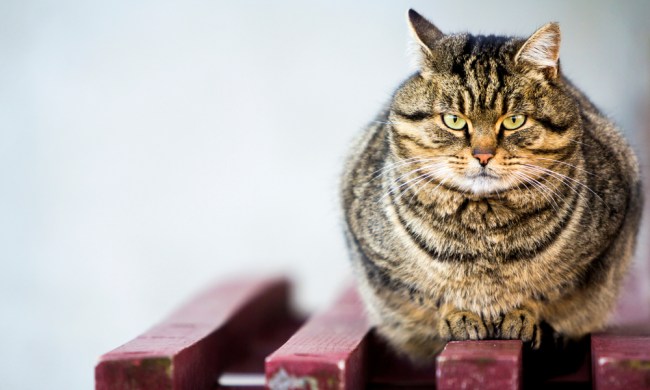National Pet Obesity Awareness Day falls on October 13 as a reminder to pet parents to monitor the weight of their animal companions. According to the Association for Pet Obesity Prevention (APOP), more than half of all dogs in the U.S. are overweight or obese. Dog gain weight for many reasons, including overfeeding or feeding the wrong food, lack of exercise, age, and health conditions. Genetics may also play a role in a dog’s weight gain. For obese dogs, it’s important to speak with your veterinarian about establishing a healthy feeding and exercise routine. Following are 10 dog breeds prone to obesity.
Pugs
In a Banfield Pet Hospital 2020 Veterinary Emerging Topics report, pugs topped the list of overweight breeds with 64% diagnosed as obese. The lack of exercise combined with overfeeding leads to overweight in pugs.
Exercise needs: Veterinary experts recommend a 25-minute daily walk at a comfortable pace. Pugs also enjoy games of fetch.

Cairn terriers
Described by the American Kennel Club (AKC) as “happy, busy little earth dogs,” cairns were originally bred to root out foxes and other small prey in Scotland. According to veterinary experts, obesity can be a significant health problem in cairn terriers, leading to joint problems, back pain, and heart disease.
Exercise Needs: Cairns require at least an hour of daily exercise. They also enjoy participating in obedience, tracking, herding, and agility trials.
Shetland sheepdogs
Shetland sheepdogs, also known as shelties, were originally bred as herding dogs on Scotland’s Shetland Islands. Today, they are intelligent, loyal family pets. They have developed a talent for begging for food with their soulful eyes, which is one reason they are prone to obesity.
Exercise needs: Shelties need at least an hour of daily exercise. They make great jogging and hiking buddies and enjoy participating in agility and herding trials.
Basset hounds
These mild-mannered hounds make wonderful family pets. Bassets excel at getting their way, say experts at the Basset Hound Club of America and that includes persuading their people to give them extra food. Obesity is a common problem with this breed and can lead to back problems.
Exercise needs: A daily 30- to 60-minute walk at a moderate pace will help keep this breed in shape. Chasing balls and tracking events are other fun activities for bassets.
Cavalier King Charles Spaniels
Originally bred to serve as lap warmers, these spaniels make devoted and loyal family pets. Cavaliers are on the list of breeds at increased risk of obesity, according to a 2020 research study at the Royal Veterinary College.
Exercise needs: Two 30-minute daily walks with a few play sessions in between will help keep this breed healthy.

Dachshunds
These spunky, curious, friendly dogs are popular family pets. Veterinary experts say that obesity in this breed can lead to diabetes and disk damage in their long backs.
Exercise needs: Dachshunds need regular exercise not only to stay in shape but also to build strong muscles to support and protect their backs. Two 30 to 40-minute daily walks will provide good workouts for these dogs.
Labrador Retrievers
The No. 1 most popular dog in the U.S. also tops the list of breeds with the highest rate of obesity. One study shows that genetics may be partly to blame for the problem, according to an article in the New Scientist magazine. Obesity increases a lab’s risk of heart and liver disease, joint inflammation, and respiratory diseases.
Exercise needs: Labradors need at least an hour of energetic walking every day. They also enjoy swimming, hiking, and running and do well in agility, tracking, and dock-diving trials.
Beagles
The most popular hound dogs in the U.S., according to the AKC, beagles are curious, clever, and energetic. Unfortunately, they are also food hounds who love to eat everything in sight. The Royal Veterinary College study placed beagles on the list of breeds at the greatest risk of obesity.
Exercise needs: Beagles are active dogs and need at least an hour of walking every day. They also enjoy hiking and do well in agility, fly ball, and rally obedience trials.
Bulldogs
Described as calm, courageous, and friendly by the AKC, bulldogs love to eat and can never have enough. That and the fact that they can handle only limited exercise make it easy for them to gain weight.
Exercise needs: A 20- to 30-minute walk every day will help keep bulldogs in good shape. As with all brachycephalic (short-headed) breeds, it’s important to restrict exercise to the coolest part of the day. Bulldogs love to play, and chasing or fetching a ball will help keep them moving between walks.

Golden retrievers
Intelligent, friendly, devoted family pets, these popular dogs pay a price for their exuberant personalities and love of food. According to APOP, nearly 60% of golden retrievers in the U.S. are considered overweight or obese.
Exercise needs: Goldens need at least an hour or more of high-energy walking every day. They also make great running buddies and enjoy swimming and participating in canine sports such as agility, obedience, and tracking.
Helping your dog lose weight can be challenging, but with commitment and a plan, you can get your buddy back into shape. Veterinary experts say that weight loss could add quality years to your pet’s life. So, the next time your dog begs for food, think about those extra years of fun together and toss him a ball instead.



